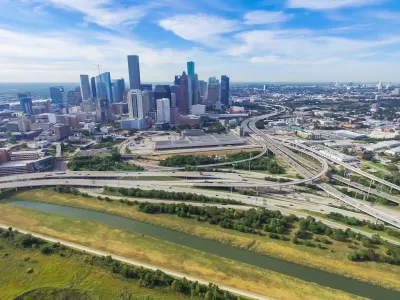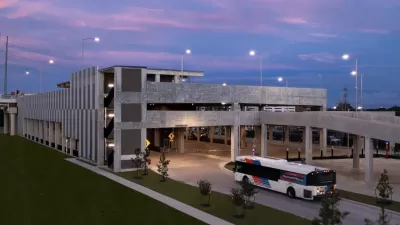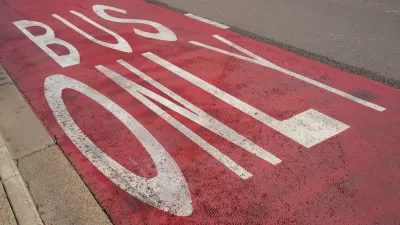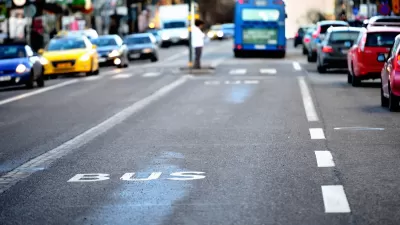Metro officials say the new plan for the Iner Katy Project addresses more immediate needs by replacing dedicated bus lanes with HOV lanes.

The Harris County Metropolitan Transportation Authority (Metro) is backpedaling on plans to add dedicated bus lanes as part of its Inner Katy Project, opting instead for high occupancy vehicle (HOV) lanes.
As Janet Miranda explains in the Houston Chronicle, “The new project tweaks the two elevated bus-only lanes to be built adjacent to the freeway into HOV lanes as part of the agency's push for "METRONow" initiatives. The change seems to prioritize car drivers first, leaving bus riders out of the equation, at least at first.” The project still includes high-speed bus stations along the HOV lanes.
The agency defended the decision by saying “It is our responsibility to the greater Houston area to focus on mobility solutions that prioritize ridership, provide services that are useful, and address community needs that exist now.” Although voters approved a plan called METRONext in 2019 that calls for 75 miles of BRT across the city, the agency is dubbing its new plan METRONow, saying it more closely aligns with current needs.
The city has been ‘quietly shelving’ multimodal projects including the University BRT line and bike lanes on McGowen, prompting an outcry from mobility and road safety advocates.
FULL STORY: METRO's Inner Katy Line project scraps bus-only lanes for HOV lanes

Trump Administration Could Effectively End Housing Voucher Program
Federal officials are eyeing major cuts to the Section 8 program that helps millions of low-income households pay rent.

Planetizen Federal Action Tracker
A weekly monitor of how Trump’s orders and actions are impacting planners and planning in America.

Ken Jennings Launches Transit Web Series
The Jeopardy champ wants you to ride public transit.

California Invests Additional $5M in Electric School Buses
The state wants to electrify all of its school bus fleets by 2035.

Austin Launches $2M Homelessness Prevention Fund
A new grant program from the city’s Homeless Strategy Office will fund rental assistance and supportive services.

Alabama School Forestry Initiative Brings Trees to Schoolyards
Trees can improve physical and mental health for students and commnity members.
Urban Design for Planners 1: Software Tools
This six-course series explores essential urban design concepts using open source software and equips planners with the tools they need to participate fully in the urban design process.
Planning for Universal Design
Learn the tools for implementing Universal Design in planning regulations.
Ada County Highway District
Clanton & Associates, Inc.
Jessamine County Fiscal Court
Institute for Housing and Urban Development Studies (IHS)
City of Grandview
Harvard GSD Executive Education
Toledo-Lucas County Plan Commissions
Salt Lake City
NYU Wagner Graduate School of Public Service





























